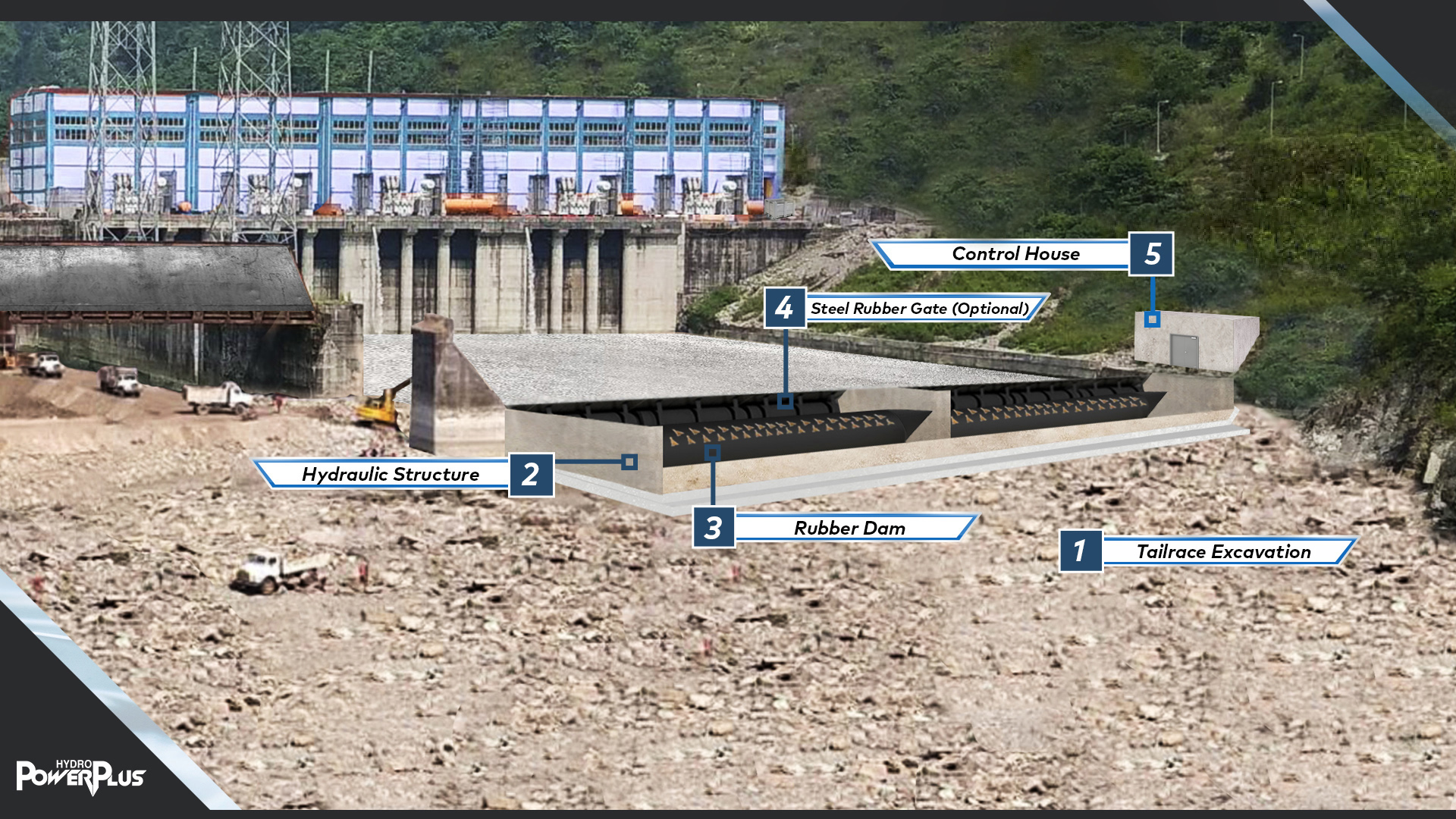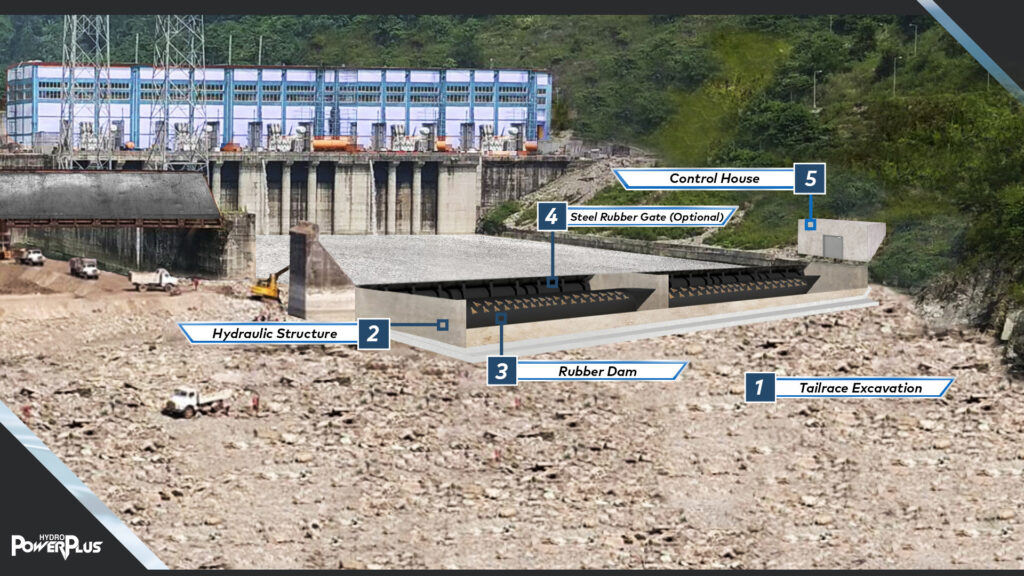Our Adjustable Weir Solution (AWS) is a patented system and method to increase power production of hydropower plants by physically manipulating tailwater elevation and the cavitation state of generating units while increasing hydraulic head. Our AWS is a solution to eliminate variations in tailwater level and maintain optimal levels of hydraulic head and cavitation in turbines. For over 100 years, variations in tailwater elevation have never been perceived as a fundamentally solvable problem – until now. Depending on the hydraulic head available, our AWS can contribute anywhere from 1% up to 10% of incremental power.







The first implementation of our AWS is the removal and excavation of the existing tailrace configuration which impedes the flow of water and creates head-loss.
It is important to execute the tailrace excavation during the dry season to facilitate access and excavation area(s) within the tailrace. Some examples of best practices may include the use of blasting, construction of temporary dykes for water diversion and transportation of vehicles / machinery, and the use of cofferdams to create dry areas for excavation and blasting operations.
All stages of excavation are executed with environmentally friendly measures including the use of silt curtains and oil booms while minimizing or eliminating impact to fish and fish habitat.
The second implementation of our AWS is the construction of a hydraulic structure on which the new adjustable weir(s) will be anchored. Construction includes the foundation of the hydraulic structure, embedded systems, and the completion of the piers and abutments for each individual span of the weir.
Construction should be executed in stages to allow for changes in flow without disrupting plant generation or causing downtime. Staging of construction is required to enable uninterrupted construction during periods of high flow.
The third implementation of our AWS is the installation of a rubber dam used to control tailwater levels. Our rubber dam is a highly efficient water controlling structure that is comprised of a flexible, high tensile, rubber coated fabric bladder, which can be designer to be air-filled or water-filled and is permanently clamped to a reinforced concrete foundation.
The hydraulic efficient nappe breakers and regulation software and hardware allow the system to regulate the water level to an operator defined set-point, to an accuracy of +/- 5 cm through the full range of partially inflated positions, without the bladder suffering from the harmful effects of oscillation and/or vibration.
At all times, the bladder is protected from abrasion by the addition of a protection sheet on the downstream side placed between the bladder and the concrete.
The fourth implementation of our AWS is the installation of a pneumatic crest gate used to isolate a rubber dam span for maintenance access. It can also be used as a redundant secondary system to be raised in the event of failure, preventing tailwater elevation from dropping below specified limits.
The crest gate is comprised of multiple steel panels raised by air-filled or water-filled rubber coated fabric bladders that are permanently clamped to a reinforced concrete foundation. The crest gate can achieve similar accuracy of control to the rubber dam, eliminating the risk of downtime in the event of rubber dam bladder failure.
The last implementation of our AWS is the operation of our proprietary AWS control. The intelligent control of our AWS includes our proprietary Anti-Cavitation Control (ACC) software which enables variable minimum submergence of units.
The ACC feature is an optional cavitation control and monitoring system which can be installed to control and maintain cavitation and head at optimal levels, thus maintaining optimal power production at all times. Depending on the hydraulic head available, this additional control variable can drastically increase power or significantly reduce the required water flow to sustain an operator-defined power output.

We innovate hydropower – Today’s largest renewable energy source